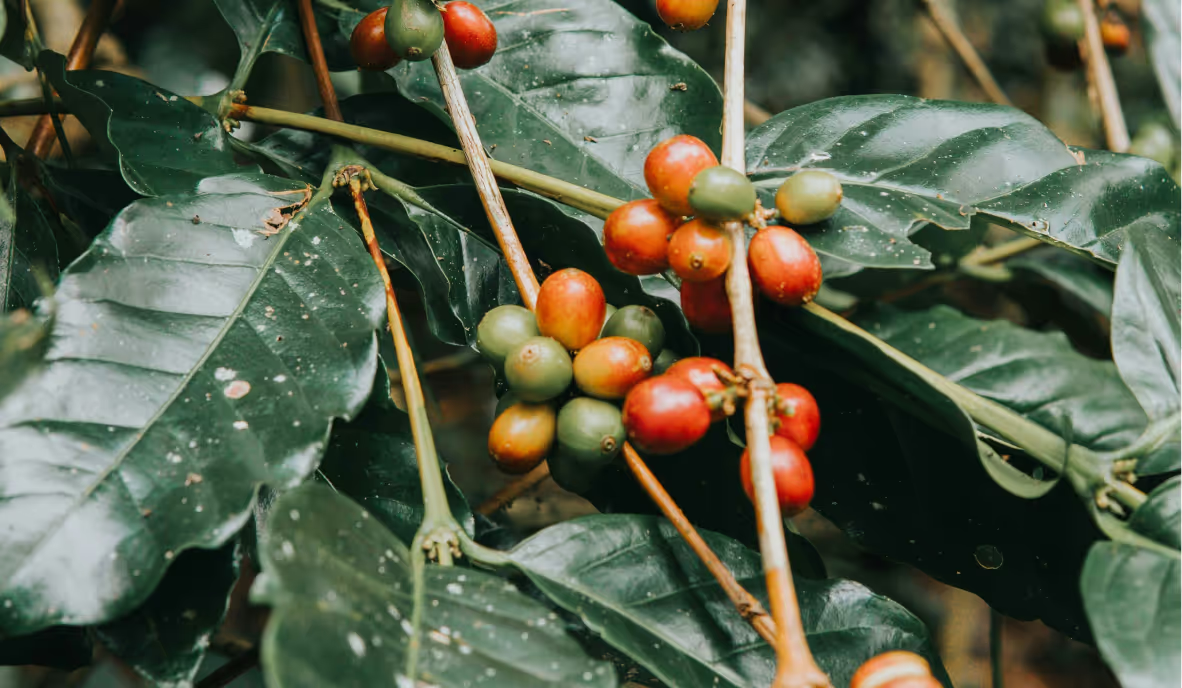How Climate Change is Disrupting Your Coffee Cup

Join the community





Starbucks is developing climate-resilient coffee tree varieties. It is also giving it away to farmers who are free to sell the resulting crops to other buyers.
So why is Starbucks, the world’s largest coffeehouse chain, pouring resources into new coffee varieties?
Well, rising temperatures, erratic rainfall, disease, droughts, and landslides caused by climate change are altering the conditions under which coffee grows. This is decreasing its yield and impacting the world’s second-most-consumed beverage.
Research shows that by 2050, 50% of coffee lands will not be viable for coffee production anymore.
So as consumers, would we have to give up our coffee altogether?
{{cta-join2}}
Coffee and climate change
Did you know that over 100 coffee types grow on our planet? However, two types, Arabica and Robusta, dominate the global coffee industry.
Arabica beans, smoother and less acidic, contribute to 70% of global coffee production. That's why brands like Starbucks exclusively use Arabica.
The remaining 30% comes from Robusta. It's more grainy, bitter, and commonly used for instant coffee.
Arabica beans, mainly grown in tropical climates, are quite sensitive to climate change. They are vulnerable to premature ripening and crop loss due to rising temperatures.
Robusta, on the other hand, lives up to its name. It can handle the heat of climate change better, thriving in temperatures between 72-86 °F, compared to Arabica’s 59-68 °F.
With Arabica under threat, countries like Vietnam, a top Robusta producer, are under pressure to boost their output.
But Robusta, often referred to as the inferior sibling of Arabica, is also feeling the impacts of climate change. As a result, Robusta's coffee price in 2023 reached the highest level since 2008.
Farmers in Vietnam are feeling the impact of increasingly erratic weather on the Robusta beans. Some farmers, faced with water shortages, are even switching to crops like black pepper and durian, the latter being a pungently popular fruit in Southeast Asia.
The future of coffee in a changing climate
So, what does this all mean for us coffee lovers? As the climate continues to shift, so too will the landscapes of coffee production. We're not just talking about where our coffee comes from, but also the very types of coffee that can thrive in these new conditions.
Farmers in some of the biggest coffee exporting countries are actively seeking out and experimenting with new coffee varieties that can better withstand the heat, drought, and disease supersized by global warming.
One such variety is Liberica excelsa. It is native to the lowlands of Uganda and compared with Robusta, Liberica takes longer to mature and produce fruit.
The changing climate is also changing the areas where coffee can grow. In the U.S. for example, Hawaii and California have been the only two states to grow coffee but farmers and scientists are researching the possibility of coffee production in Florida, which now has more warmer days to grow and cultivate coffee.












